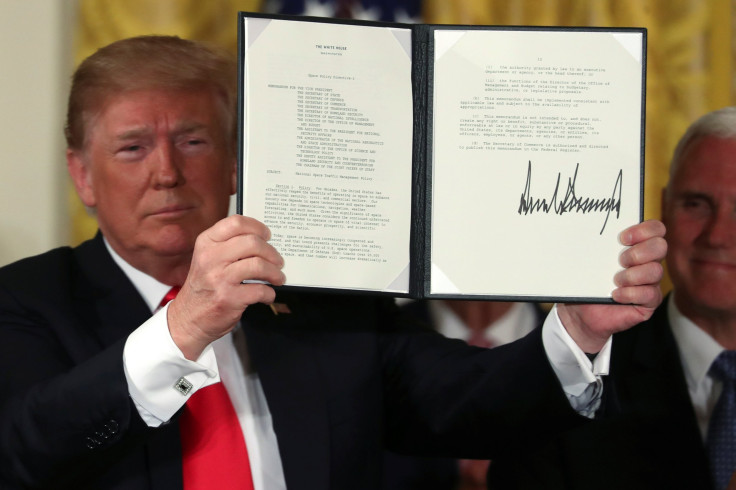Trump’s Space Policy Directive-3 Aims To Reduce ‘Growing Threat Of Orbital Debris’

The problem of space debris — pieces of junk of various sizes, as large as a defunct satellite and smaller than a marble — is not a new one, but as humans send more objects into space, we create more and more of it, making the matter increasingly troublesome. While various methods have been suggested and tried, none too successfully, to tackle this issue, the latest push for it has come from the White House.
President Donald Trump signed the Space Policy Directive-3 (SPD-3) on Monday, which directs “the United States to lead the management of traffic and mitigate the effects of debris in space.” According to a statement by the White House, SPD-3 “provides guidelines and direction to ensure that the United States is a leader in providing a safe and secure environment as commercial and civil space traffic increases.”
Previous directives by Trump, SPD-1 and SPD-2, instructed NASA to restart crewed missions to the moon and created the regulatory framework for private players interested in space commerce, respectively. Since both those endeavors would lead to an increase in space traffic, the concern with space debris is only natural.
NASA Administrator Jim Bridenstine said in a statement: “Reducing the growing threat of orbital debris is in the interest of all nations, and NASA looks forward to working with the National Space Council, the Department of Commerce and other partners on a path forward.”
The large debris are created in space by derelict and disused satellites and rockets that get trapped in orbit around Earth. The effect of radiation, unimpeded by the protective layer of atmosphere closer to the planet’s surface, damages those objects further, and sometimes, small pieces break off. Traveling at speeds of up to several thousand kilometers (miles) an hour, even these small objects can deal considerable damage to a larger object they collide with. Such collisions create even more debris, in a sort of vicious cycle.
Matters would be worse if a piece of debris were to hit a functioning satellite, or a space laboratory like the International Space Station (ISS), both things that have already happened. To minimize the possibility of such potentially catastrophic events from occurring, space agencies worldwide track space debris meticulously. NASA regularly monitors about 17,000 piece of junk larger than an apple in size, and about half a million pieces that are larger than a marble. An estimated 200 million pieces or so that are smaller than marbles are in Earth’s orbit, each one a potential hazard traveling at 17,500 miles an hour.
Among various solutions proposed is installing lasers on the ISS to blast away space debris in its path. Otherwise, it has to make regular maneuvers to keep out of the path of debris, something it can’t always do well, leading to a hole in its solar panel. Chinese scientists also proposed using lasers mounted on a satellite to shoot space junk, either destroying it or nudging it on a path toward Earth’s atmosphere, where it would burn up on reentry. Some European researchers are working on a method that uses a harpoon, net and drag sail to clear up the garbage in space, while another wants to use a magnetic tug to change the orbit of debris.
In early 2017, a satellite with a junk-fishing net was sent up by Japan, its 700-meter long electrodynamic tether designed to slow down the speed of debris and push them into a lower orbit, where they would burn up in Earth’s atmosphere. But the tether failed to deploy.
© Copyright IBTimes 2024. All rights reserved.











